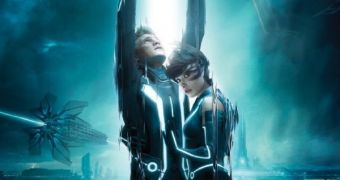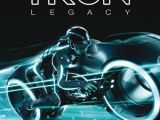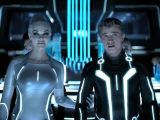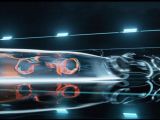In what must be one of the most risky moves in the history of cinematography, in 2010, Disney brings out a sequel to a film that came out 28 years ago – and one that wasn’t commercially successful either, while we’re at it. “TRON: Legacy” is an absurd exercise of the imagination (which, paradoxically, is not new at all), a film that makes cool “boring” lines of zeroes and ones, an insane trip into a world that shines bright but lacks the most basic sign of life. “TRON: Legacy” is a sequel in the true sense of the word: in 1982, Disney came out with “TRON,” the first film of its kind to use special effects to such a scale to show what was then deemed impossible, the existence of human life inside a computer, literally.
As noted above, the original film wasn’t a hit, but, throughout the years, it became a cult classic as several generations of geeks (and we use the term in the most flattering way possible) embraced it as a sign of things to come: the future as it was before it happened.
It’s no wonder then that “Legacy” spent so many decades in the making, because its job was not an easy one: it’s hard to match expectations built throughout years by so many generations.
Perhaps this explains why first-time director Joseph Kosinski (whose background as a director of television commercials and formation as an architect are apparent throughout), and writers Edward Kitsis and Adam Horowitz seem to go out of their way not to stray from the mythology.
The first scene in the film goes straight to making the connection with the original, the source material: it’s 1989, and Kevin Flynn (an uncanny, digitally youngified Jeff Bridges) is tucking his son Sam into bed. He promises he will one day take him to The Grid, this miraculous and digital world he’s been creating.
Also then, we learn about two characters that set the wheels in motion in the first film, two programs: Clu, who’s gone rogue, and Tron, the good guy.
That night, Flynn disappears and is not heard of until 20 years later. By now, Sam has grown up into this muscular, swagger-y fellow (Garrett Hedlund), who loves bikes, and undermining the money-grabbers who now run his father’s company, Encom, but who can’t be bothered to find out what his dad may have been working on at the time of his disappearance.
Of course he’s got abandonment issues: he was raised for a few years by his grandparents, and was then completely alone in the world when they died. He doesn’t want to believe his dad would leave him, as people say.
One day, Flynn’s former partner, Alan Bradley (Bruce Boxleitner, who also reprises the role in the original pic), tells Sam he got a page from the Arcade, where everything related to The Grid used to happen.
What’s next is not surprising, even if it defies all logic – even for today’s context, in which audiences have been educated to properly suspend all belief when they walk in the theater.
At the Arcade, Sam finds his father’s old computer (and, yes, it still works after 20 years) and is taken to The Grid, which is when the real journey begins – a step marked not too subtly through the transition from 2D to 3D.
To say that things have changed over the years here, in this digital world, is an understatement: Clu has taken over The Grid and has turned it into what looks like a constant party. That is, when he and his programs are not pondering more serious issues, like taking over the world.
Flynn is also there: again predictably, he’s been trapped into this world and, like most known Creators, has seen his creation turn on him. He’s been living in a fancy, futuristic bat-cave with an acolyte named Quorra, who is a program herself, but he’s not really opposing Clu the tyrant.
The three, like the holy Trinity, will attempt to put dictatorial Clu back in his place and, safe to say, not few are the biblical references, even if this is yet another potential subplot that doesn’t really get off the ground. They must also get to the portal before it closes, or they will be trapped inside The Grid for eternity.
As it happens, Clu also wants to get out and – you guessed it – take over the world.
The storyline is simplistic at best and ridiculously flawed at worst: there is no humanity to it because so much time is spent on making The Grid believable. There is a distinct feeling that nothing happens because the characters will it, but because the writers did.
In other words, everything viewers see on screen is only a pretext to show off the fancy special effects, there is no immediate sense of urgency, danger or, for that matter, humanity. This, in spite of Bridges’ honest efforts at working against a rather poor script.
However, nothing is lost, contrary to what one may believe. In a world that’s completely bowed to digitalization, “TRON: Legacy” is one of the few legitimate uses of 3D this year. It creates novelty where there is none to be had (after all, everything has already been done in the ’82 film) and the experience is truly immersive.
The Grid is a monochrome dual world of perpetual night: the bad guys have reddish neon light on their suit, the good ones bluish. Clu is downright creepy (Disney used the same technology on Jeff Bridges as was used on Brad Pitt in “The Curious Case of Benjamin Button”), but there was no other way to make him young: it must have been what one may call a necessary evil.
The “light cycles” and lightships, and even the light discs, are the same as in the original film: it’s how they’re rendered in motion that makes “Legacy” such a huge movie.
Kosinski might not know how to show the human side of his characters but, as an architect, he knows how to construct a real world that doesn’t exist: light has gravity in “Legacy,” the use of space (seen and unseen) and lines is so smart that one feels one could simply reach out and touch what’s being shown on screen.
The music also helps. The score is among the strongest suits of the film: in fact, the duo Daft Punk has managed to do the almost-unthinkable, delivering such an excellent score that some scenes even seem to have been thought as complementary to it, and not the other way around.
As long as characters are engaging in fights and races (with the minor exception of one brief cameo from the unpredictable Michael Sheen as a Bowie-esque club owner with a wicked sense of humor and even wickeder dance moves) and as long as Daft Punk music plays in the background, “TRON: Legacy” is a brilliant, unique, not to be missed experience.
In the end, this is precisely what it aimed to do.
“TRON: Legacy” is rated PG for sequences of sci-fi action violence and brief mild language, and comes out in most territories on December 17, ending its run in France on February 2.

 14 DAY TRIAL //
14 DAY TRIAL // 








